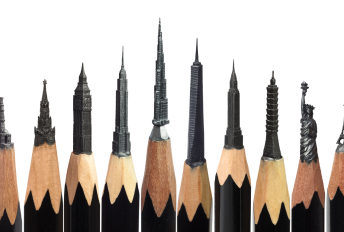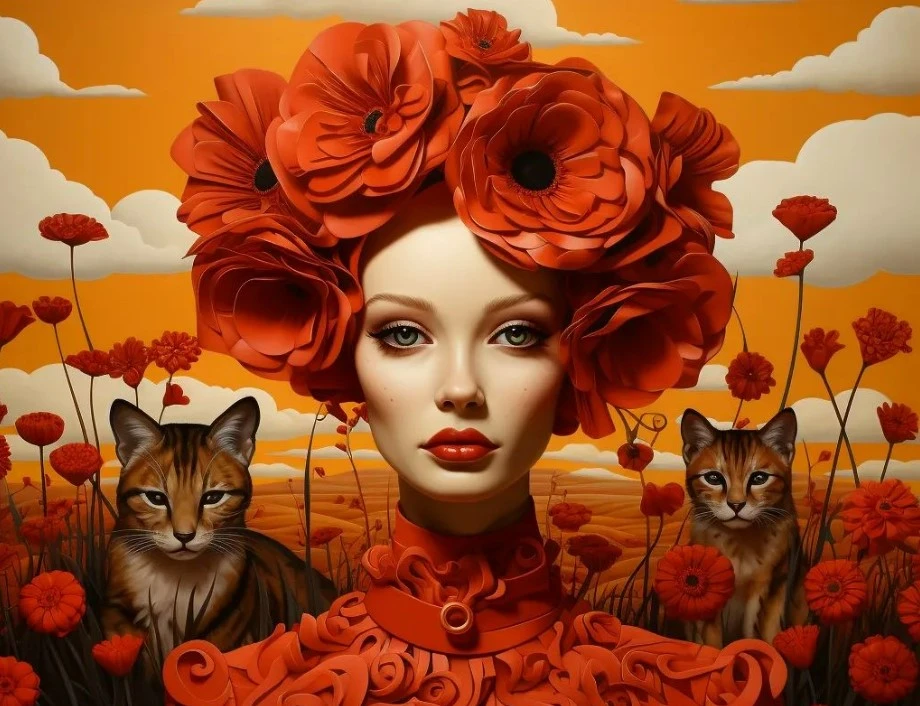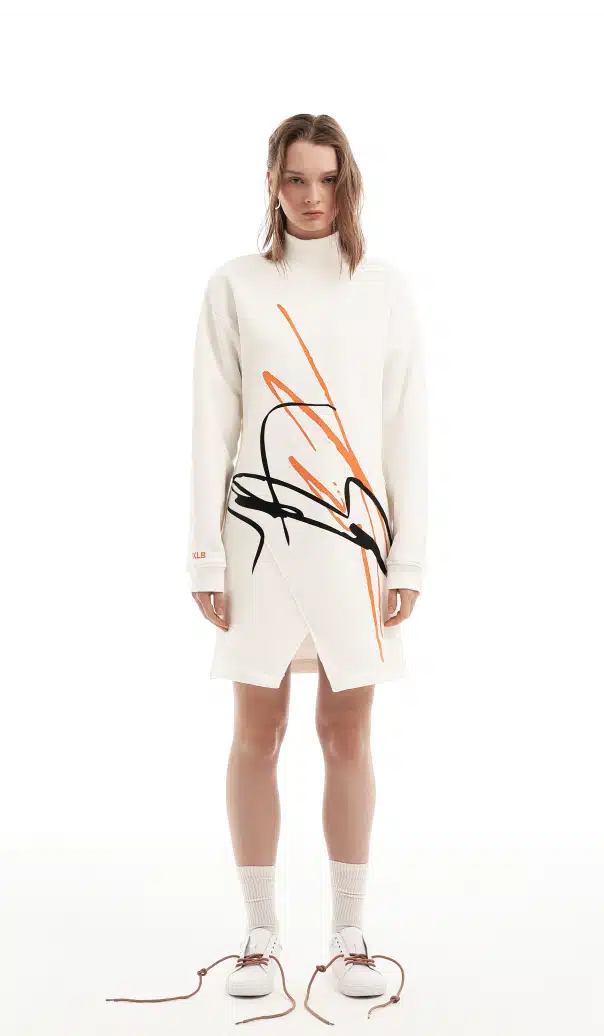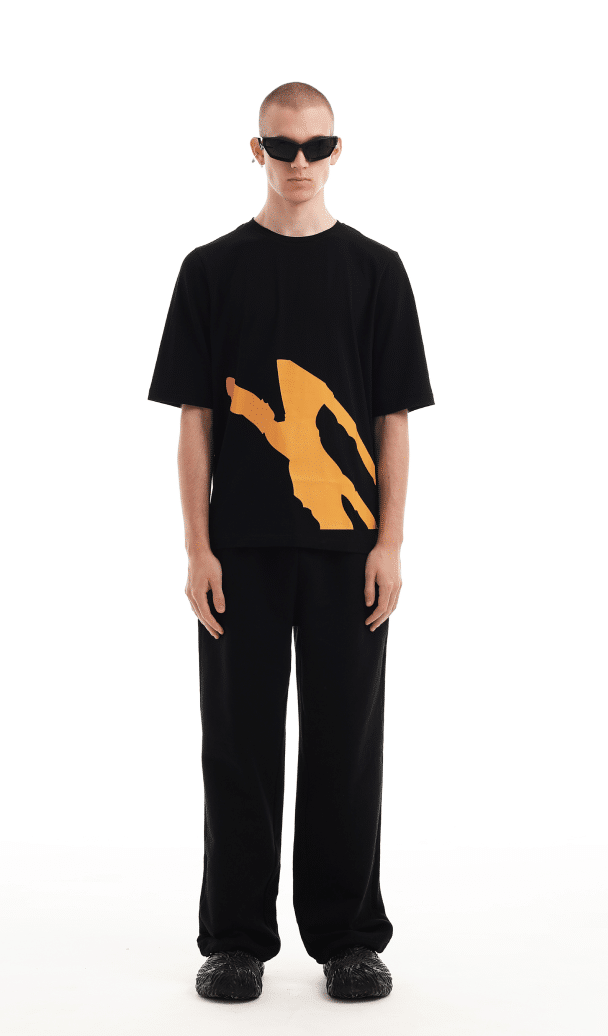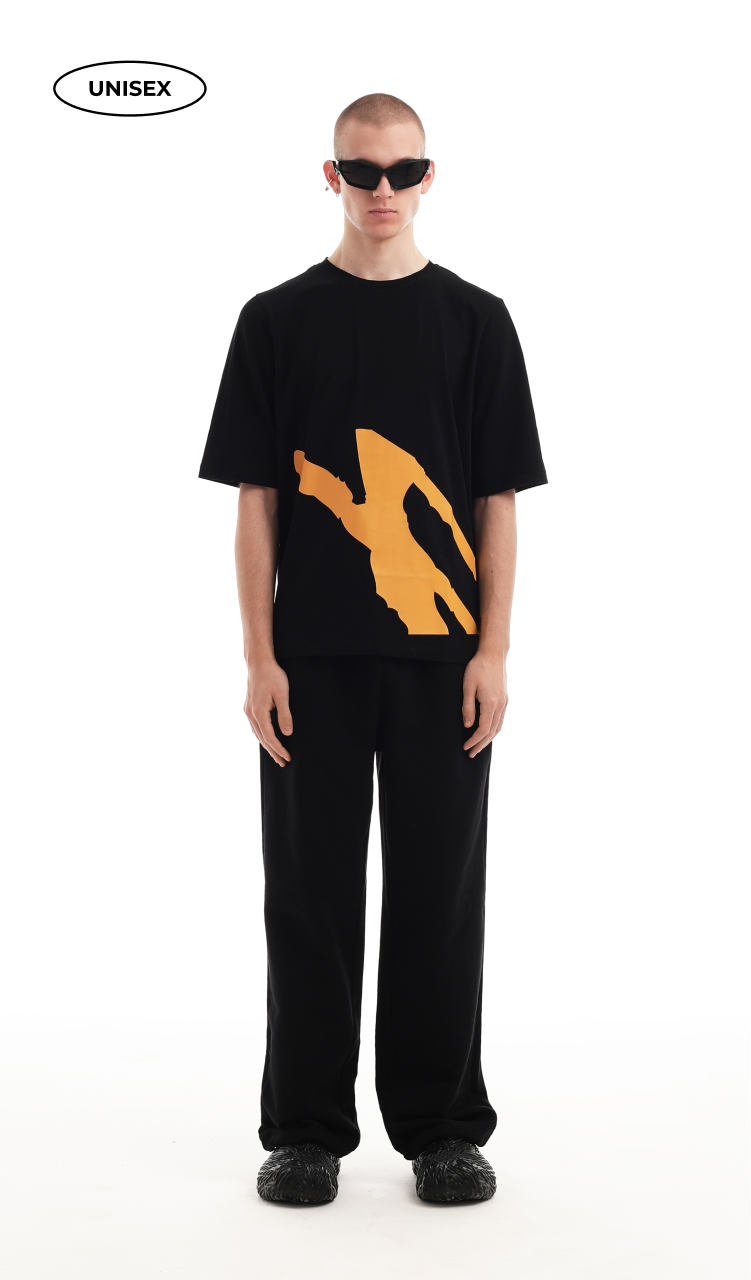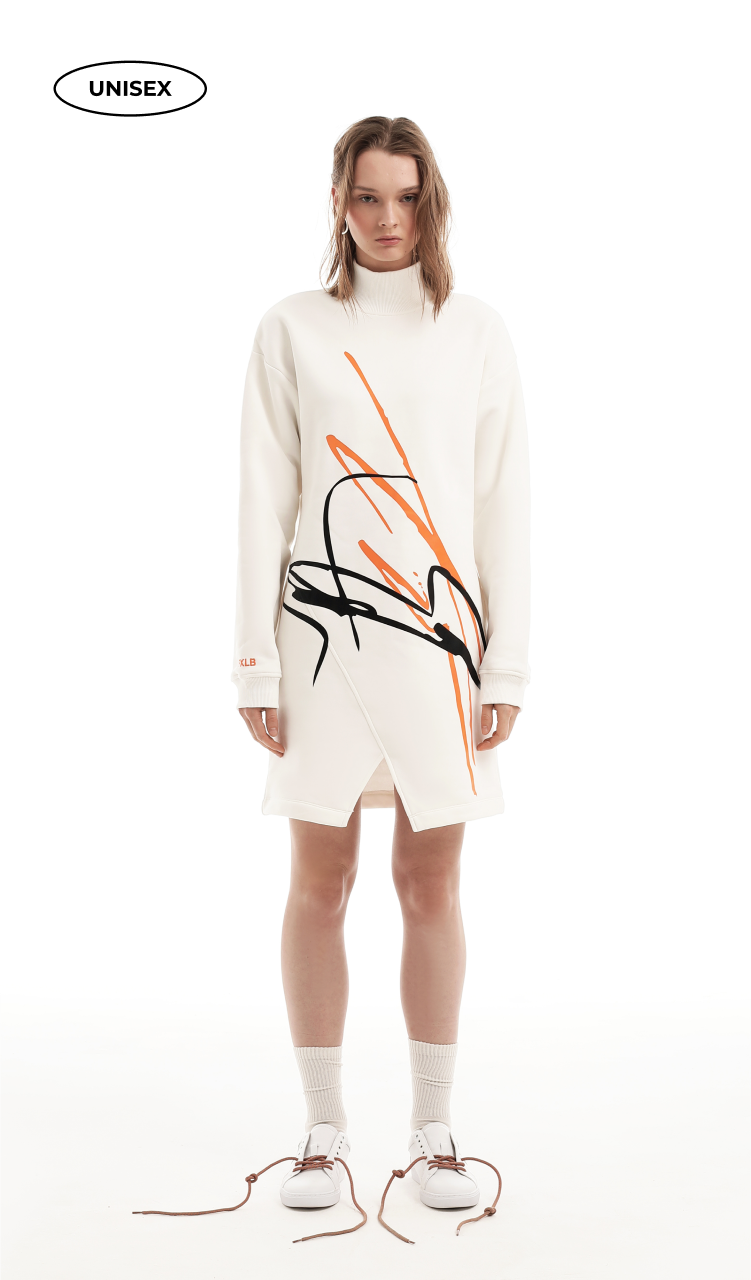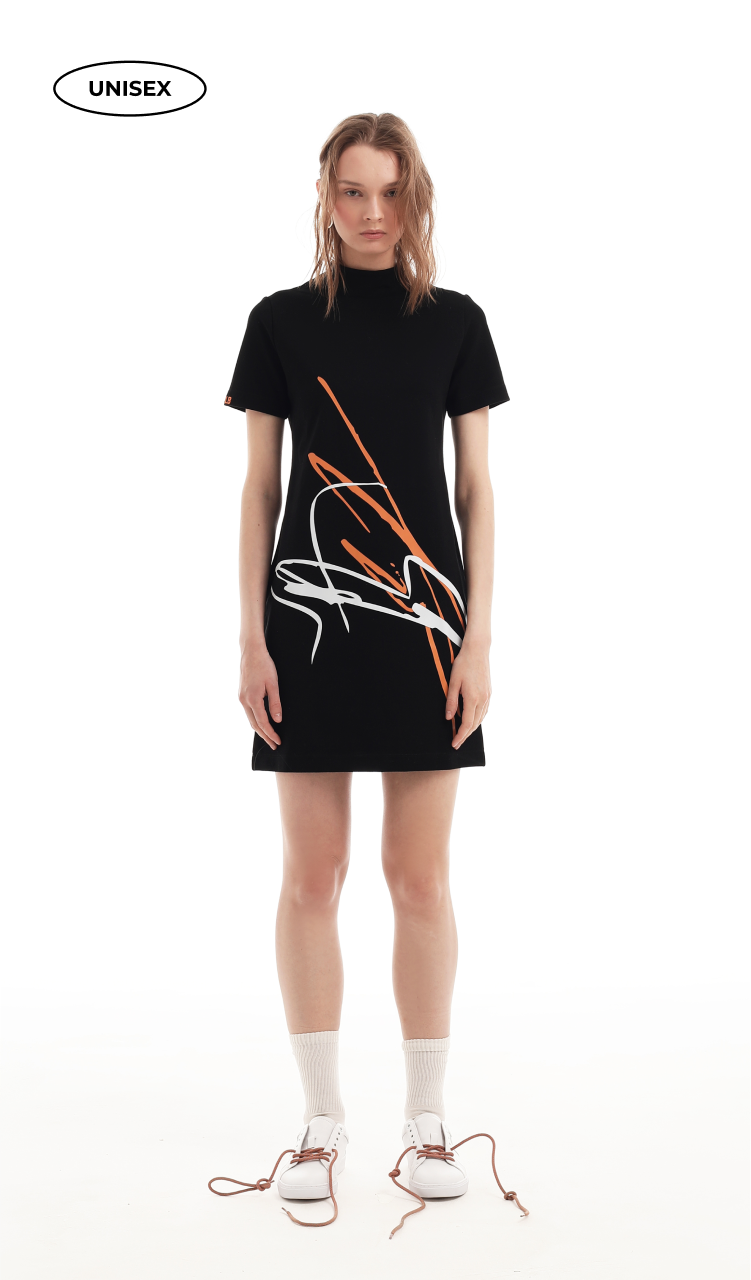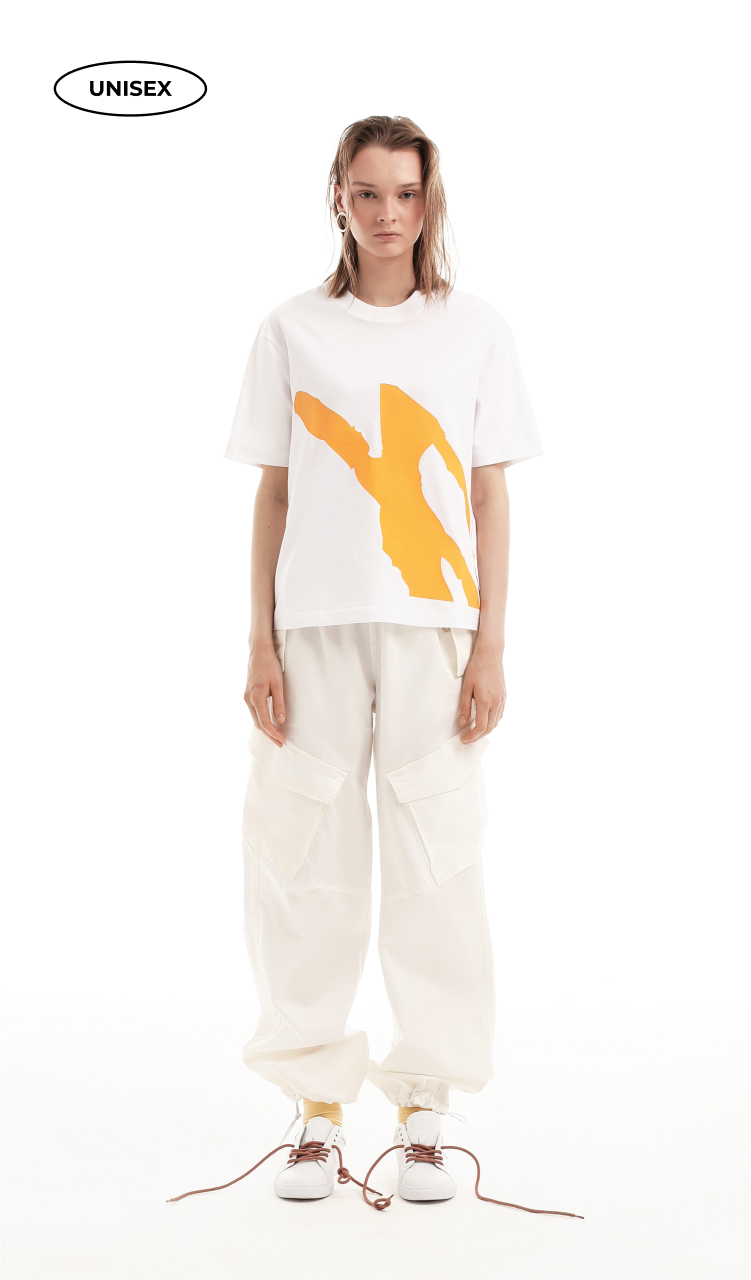Blog
The symbolism of Gustav Vigeland’s work in Frogner Park, Oslo
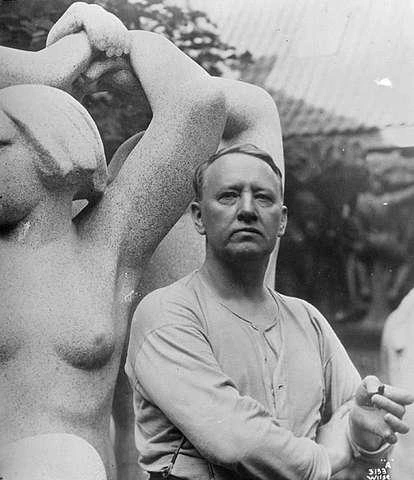
SHARE THE ARTICLE
Gustav Vigeland, a visionary Norwegian sculptor, has left a rich legacy in the art world with his profound and thought-provoking creations. His body of work, spanning decades, is renowned for its remarkable symbolism.
Vigeland believed that symbolism had the power to transcend language and cultural barriers, a reaching the core of human emotion.
As a young lad of nineteen, Gustav Vigeland left a small provincial town for Oslo in 1915 to become a great sculptor. In the capital, he was to meet the then-famous sculptor and mystic Brynjulf Bergslien. It was thanks to his mentor that the young Gustav became interested in philosophy and Judeo-Christian mysticism. Gradually, images of lizards and dragons – symbols of human sin and the demonic spirit – began to appear in the works of the promising young artist. But Gustav Vigeland‘s greatest focus was on human nature, which he saw as far more complex and powerful than all the diabolical forces put together.
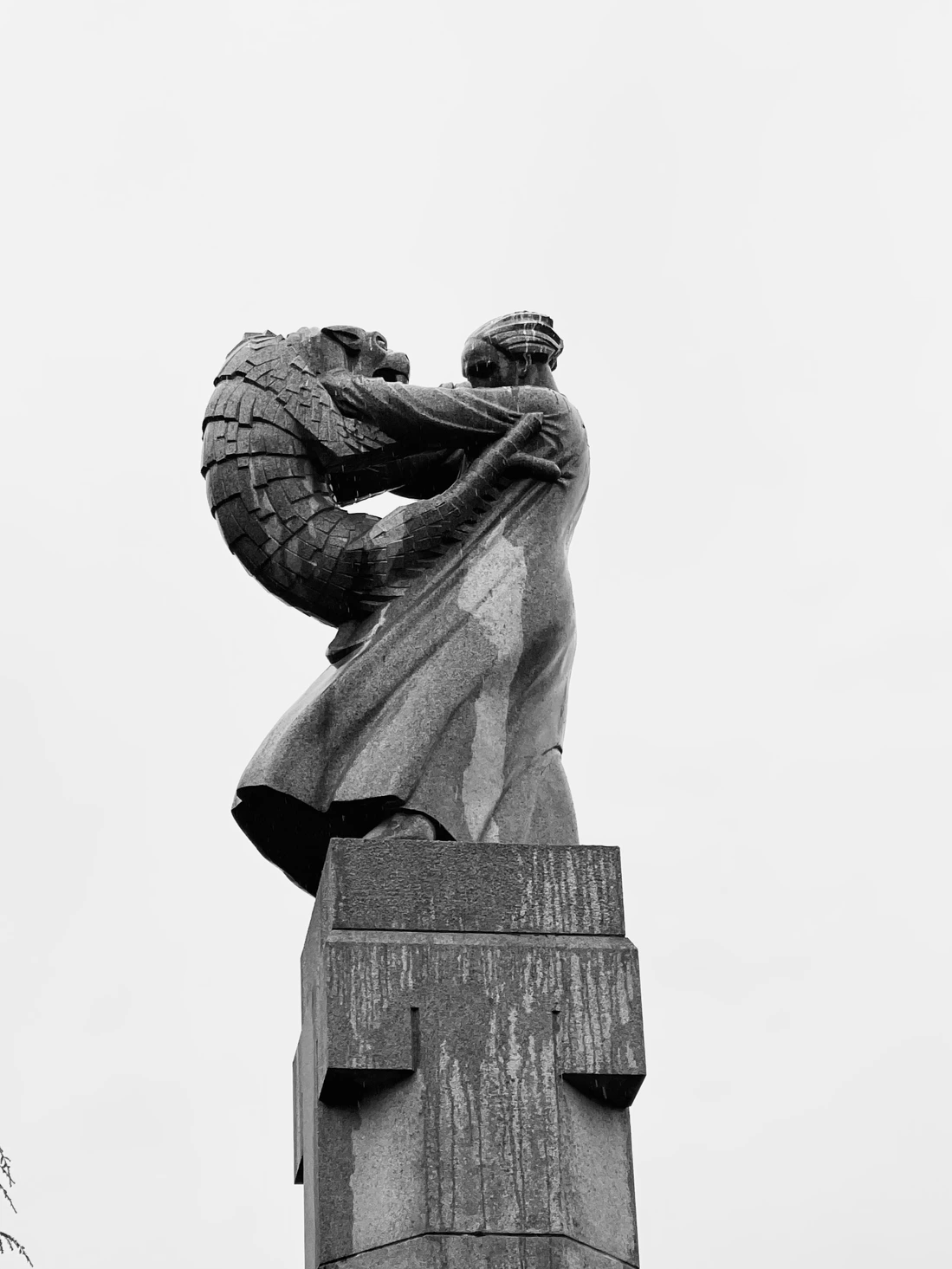
The year 1921 was a turning point in the master’s work. The house in Oslo where he lived and worked was earmarked for demolition by the city authorities. In the course of a lengthy trial, the authorities allocated Gustav another building and part of Frogner’s grounds, but on the condition that all of the master’s future works would belong to the city. Thus Vigeland Park was born.
Over the next 20 years, the sculptor extensively reconstructed Frogner and created an entirely new open-air museum of his work. The park was altered and rebuilt several times over the years, some of the sculptures changed their location. Vigeland worked on it until his death.
The park now covers an impressive 30 hectares. Much of the design has remained unchanged since Gustav’s time. The authorities in Oslo try in every way possible to preserve the authenticity of the place. There are 277 statues on the site, reflecting the variety of human states and relationships.
Gustav Vigeland is said to have wanted to demonstrate the weakness and helplessness of modern humanity in the face of its vices, and to show that the only true meaning of life lies in the pursuit of a lighter higher power, in the struggle against one’s own demons.
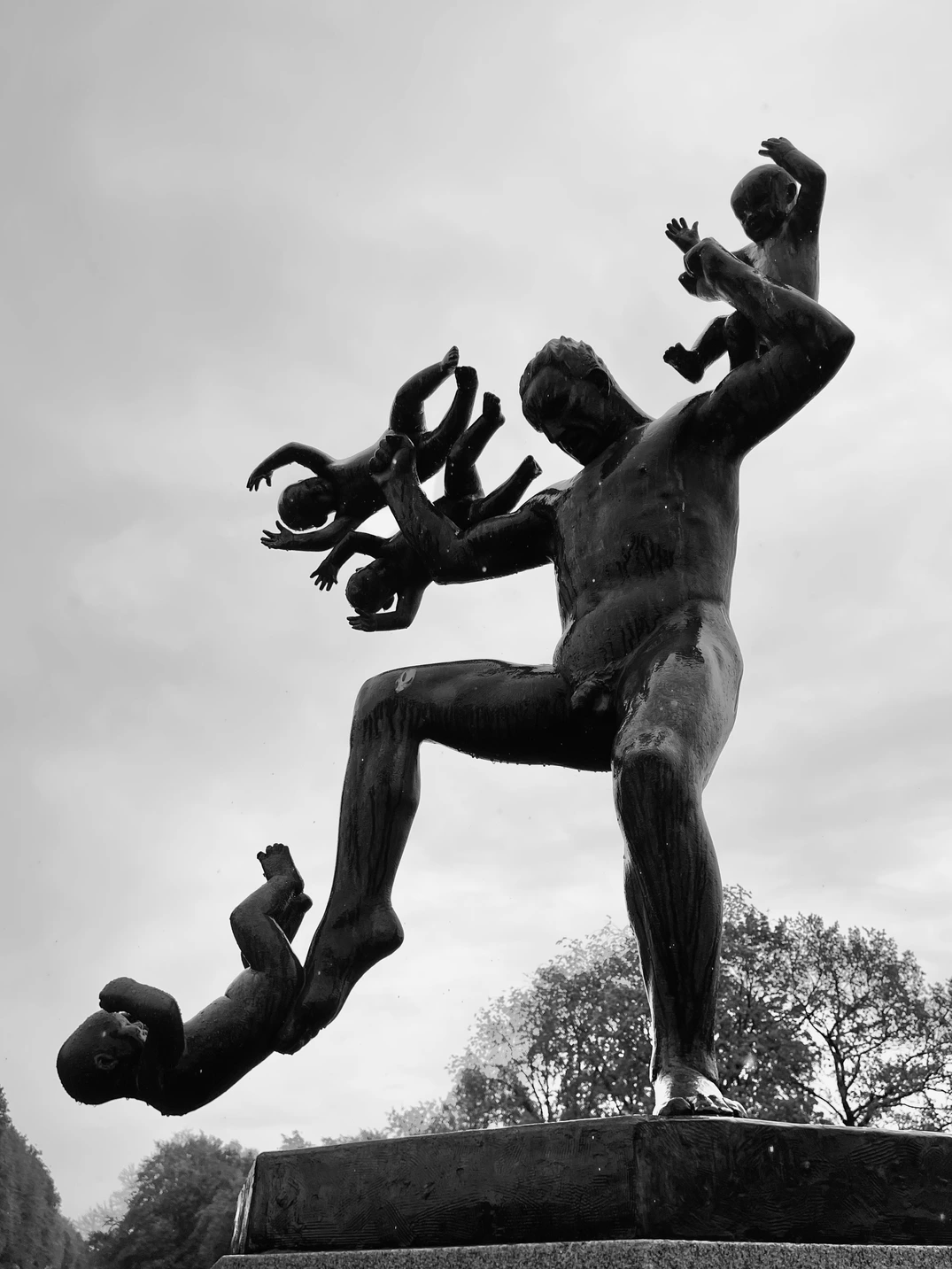
If you walk in a straight line after entering the park, you’ll see a 100-metre-long magnificent bridge about 15 metres wide, decorated with lanterns and numerous sculptures. If you count, there are a total of 58 bronze statues on the granite parapets – men, women, old men, babies – in small groups or singly, with blissful smiles on their faces and grimaces of either pain or unbearable suffering, the children in these sculptures often represent one of the human vices.
The figure of an adult man frolicking merrily with a small child demonstrates his indulgence in indulging his weaknesses.

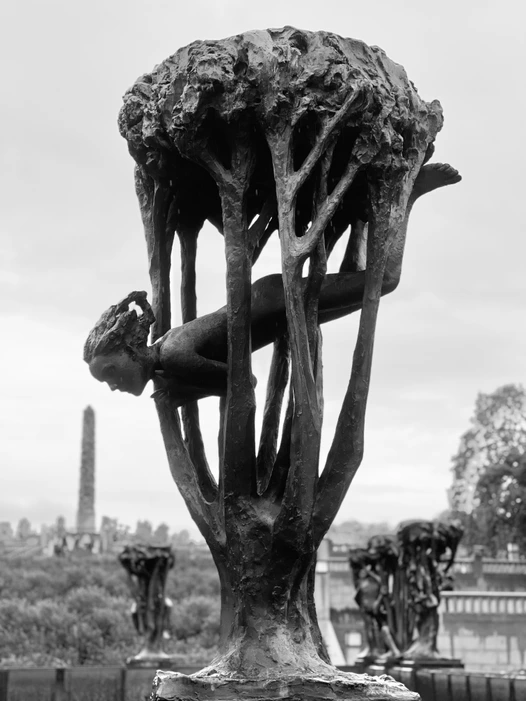
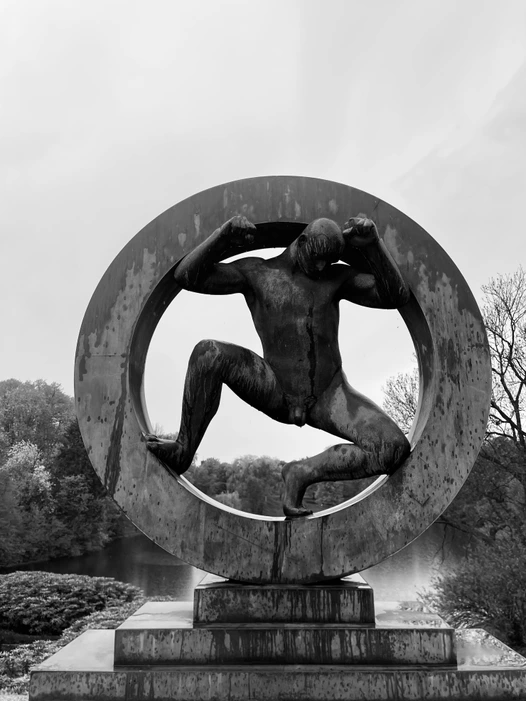
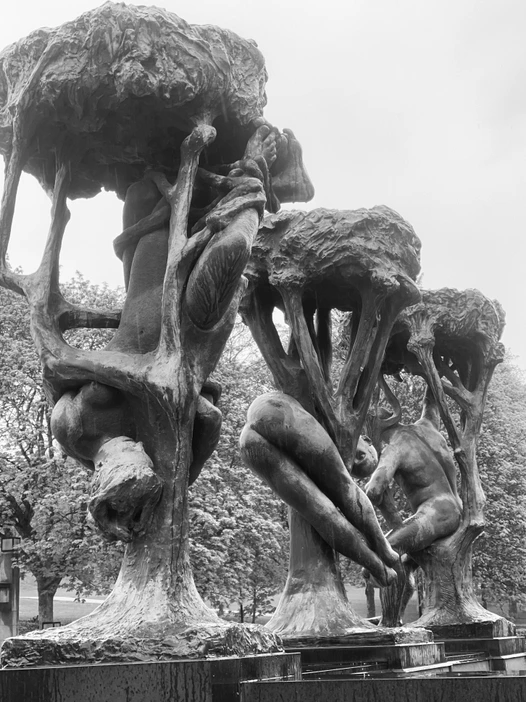
A man who is tormented by several infants at once is trying to break free from the shackles of his own vices.
One of the most recognizable statues in Frogner Park is the Angry Boy. This bronze sculpture portrays a young boy in a state of anger, symbolising the intensity and rawness of human emotions.
This Bridge serves as a metaphorical representation of life’s journey, as we progress from innocence to wisdom, encountering various experiences and emotions along the way.
In Scandinavian mythology there is such a concept as ‘Urd’, the source of divine wisdom. The sculptor tried to depict it in the form of a bas-relief-rimmed fountain with 20 bronze trees. It is a kind of parody of the Garden of Eden, where a godless man, instead of enjoying the Garden of Eden, turns into a tree and becomes part of it.
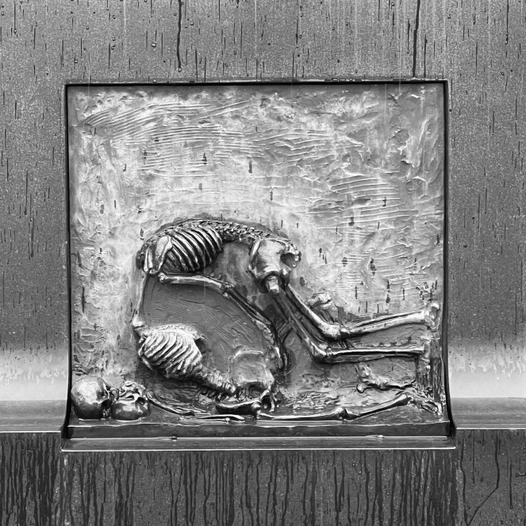
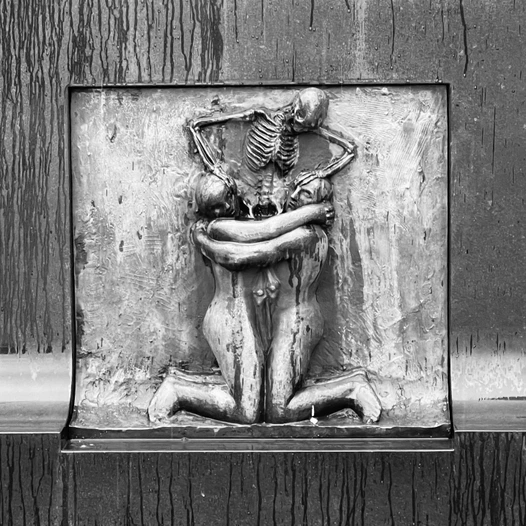
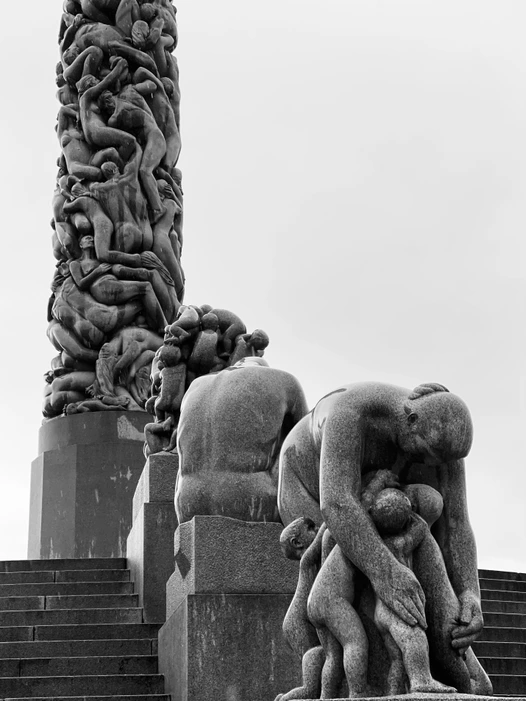
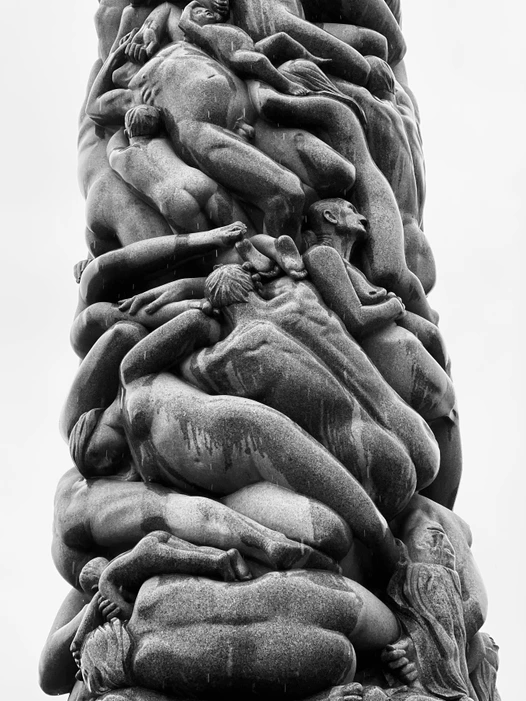
The centrepiece of Frogner Park, the Monolith, stands as a towering testament to Vigeland’s vision. This granite sculpture, rising 14 meters high, features intertwined human bodies. It symbolizes the eternal circle of life and the interconnectedness of humanity. The figures’ seamless unity evokes a sense of collective strength, reminding us of our shared journey and the bonds that tie us together.
In Vigeland’s sculptures, the human form becomes a canvas for profound exploration of human emotions, desires, and relationships. From tender moments of love and connection to the depths of sorrow and despair, each sculpture captures a facet of the human experience.
Vigeland’s sculptures often depict the inherent conflict within human existence. Figures locked in embrace or engaged in fierce struggles symbolize the perpetual battle between opposing forces—light and darkness, love and fear, life and death. By portraying these tensions, Vigeland prompts viewers to confront the inherent contradictions within themselves and the world around them.


Adjacent to the Monolith, the Wheel of Life sculpture captures the essence of life’s perpetual motion. Intertwined in graceful poses, the figures represent birth, growth, decline and rebirth, highlighting the endless cycles that shape our lives. Moreover, they highlight the ever-present potential for growth and transformation.
Frogner Park stands as a breathtaking haven for art enthusiasts and nature lovers alike. Foxylab advises you to visit this mystical park and enjoy the majesty of Gustav Vigeland’s work.
COMMENT
LEAVE A COMMENT
Actually, this article could
be in your email
Featured materials from FOXYLAB MAGAZINE
are available in our newsletters.
Subscribe and get a dose of inspiration!
SHARE THE ARTICLE

more articles
International fashion icon and symbol of Parisian style, Ines de la Fressange is one of the most famous women in France.
A whole world on the tip of a pencil. The story of an artist who proved that true art has no limits and that it is never too late to start all over again.
Vitalie Burcovschi’s digital art captivates the soul and transports the viewer to a realm of boundless imagination and emotion. In his art, he creates…
Anastasia Pilepchuk is a Berlin-based artist with Buryat roots. She creates masks and face jewellery inspired by the nature and the culture of her beautiful region.

want to share your story
with the world?
We're open to collaborating with creative and talented individuals like you. Leave us your email below, and let's connect for interviews, articles, and more.
don’t miss!
New drop
foxylab ny x Edward Acosta
New drop FXLB x Edward Acosta
A thin edge of seduction and the consumerism fetish is thoroughly blurred in Acosta’s art in the use of both light, and dark tones. Bold lines serve as a fashionable juxtaposition of a peaceful dream-like state and a vivid color, representing action and presence in the moment.
International fashion icon and symbol of Parisian style, Ines de la Fressange is one of the most famous women in France.
A whole world on the tip of a pencil. The story of an artist who proved that true art has no limits and that it is never too late to start all over again.
Vitalie Burcovschi’s digital art captivates the soul and transports the viewer to a realm of boundless imagination and emotion. In his art, he creates…
Anastasia Pilepchuk is a Berlin-based artist with Buryat roots. She creates masks and face jewellery inspired by the nature and the culture of her beautiful region.



